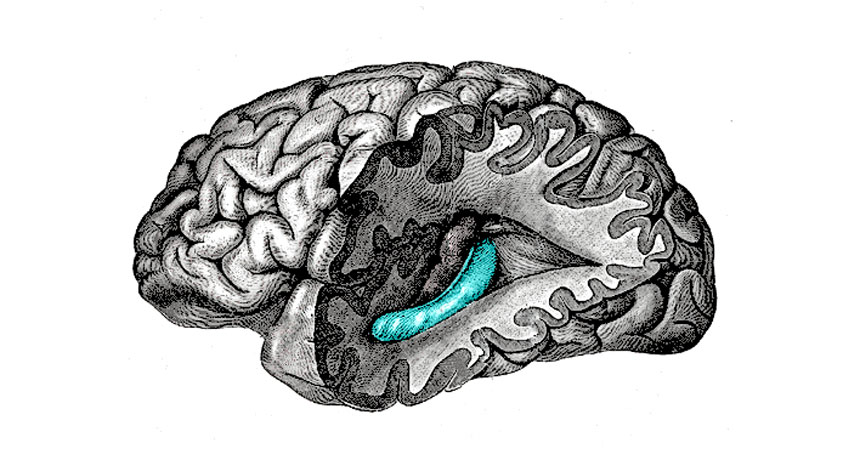How your brain is like a film editor
The hippocampus may slice our lives into ‘scenes’ suitable for storing as memories

In a new study, the hippocampus (blue) was active during parts of films when one event ended and another began. Marking such boundaries may help the brain package ongoing experiences as separate memories.
Henry Vandyke Carter - Henry Gray/Wikimedia Commons (PubDom)
Our lives are continuous experiences. But like the scenes of a movie, we tend to remember particular moments or scenes plucked from those experiences. Maybe you remember what your third-grade classroom looked like. Or kicking a goal in a soccer game. Or some particular meal that you ate at a friend’s house. New research suggests these memories may have been saved thanks to a part of the brain called the hippocampus.
The hippocampus may slice up our life’s moments in ways that can be stored away as memories. Think of it as the film editor of our lives.
Gabriel Radvansky studies the psychology of memory at the University of Notre Dame in Indiana. He wasn’t part of the new research. But it offers a new way to study how people form memories, he says. “Research like this helps us identify, ‘What is an event?’ from the point of view of the brain.”
Many lab tests of memory check how well people can recall dull lists of information. “So much research is done with these little bits and pieces — words, pictures, things like that,” Radvansky says. But those dry tidbits aren’t what the human brain usually handles. “The mind is built to deal with complex events.”
For the new study, researchers turned to something more like real life: movies.
Aya Ben-Yakov and Rik Henson work at the University of Cambridge in England. As cognitive neuroscientists, they study the brain’s role in thinking, memory and other mental processes. They wondered how people remember certain moments from their lives. So they researched what happens in the brain as people watched feature length videos.
Sixteen viewers were asked to note when one scene ended and another began. And those transition spots occurred at the same time that one part of the brain became especially active in more than 260 other viewers of these same movies. That response “was actually quite striking,” Ben-Yakov notes. “I wasn’t expecting it to be this strong and this clear.”
The brain goes to the movies
Ben-Yakov and Henson used data from two earlier projects. Each project had recorded people’s brain activity as they watched videos. While lying in a brain scanner, 15 watched the 1994 movie “Forrest Gump.” Another 253 people watched Alfred Hitchcock’s 1961 television drama, “Bang! You’re Dead.”
Ben-Yakov and Henson then lined up the brain activity in each of these 268 volunteers with the transition points that had been marked by 16 new observers. At those times, activity spiked in one brain structure. Called the hippocampus, it is important for memory and navigation. The researchers also looked at behavior in this part of the brain throughout the full shows.
These movie transitions didn’t always involve jumps to new places or times in a story. One such boundary came near the beginning of “Forrest Gump.” In the scene, Forrest sits quietly on a bench. Suddenly, he blurts out his famous greeting: “Hello. My name’s Forrest. Forrest Gump.”
The hippocampus may have helped slice that continuous bench scene into two events: the before-talking and after-talking periods. Such divisions may help package distinct segments so that they can then be stored as memories, the researchers now conclude.
The Cambridge team reported its findings October 8 in the Journal of Neuroscience.
Of course, the brain does not necessarily respond to films in exactly the same way as it does to events in someone’s own life, Ben-Yakov says. Someone’s hippocampus might behave somewhat differently. And that’s important, she says, because “our goal is to understand real life.”







